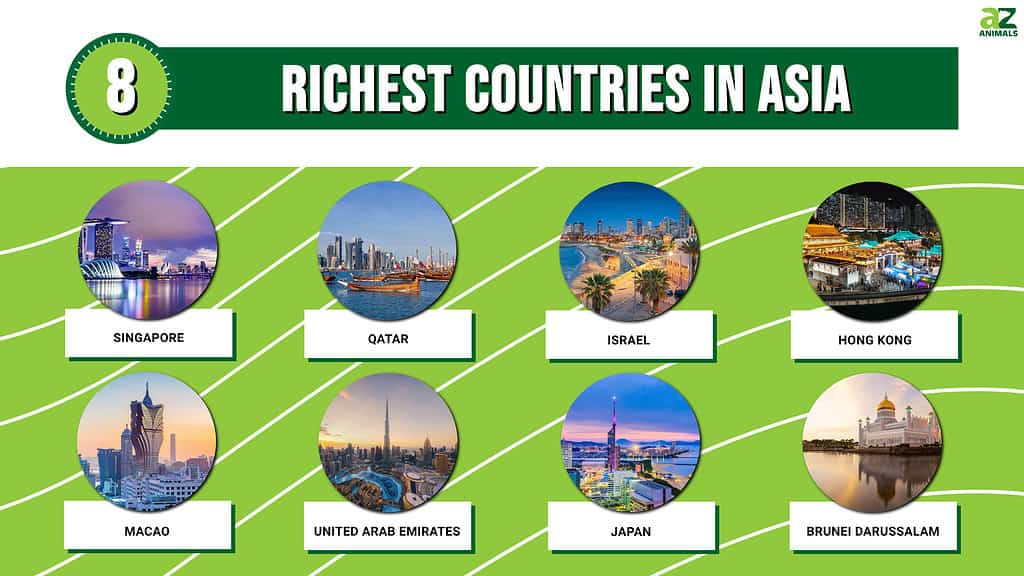
With bustling economic growth, Asia is rapidly cementing its position as a powerhouse on the global stage. By 2040, this continent is expected to contribute a staggering half of the world’s GDP. Many experts predict Asia to be responsible for over forty percent of global consumption, highlighting an era of increasing economic importance. The surge in economic activity within this dynamic continent is mirrored in the wealth of its richest nations. This article highlights these wealthiest countries, specifically organized by GDP per capita, a clear metric of their economic strength and prosperity!
Richest Countries in Asia
There are 48 countries in Asia, making up the world’s largest continent in size and population by quite some margin. This massive continent has an extremely diverse cultural and political landscape, with some of the world’s richest and poorest countries. Let’s dive into eight of the wealthiest Asian countries!
Note: We have ranked these countries by their GDP per capita in US dollars. We used official data recognized by the United Nations (UN) and the International Monetary Fund (IMF).
1. Singapore – $91,100

The richest country in Asia is Singapore, with a GDP per capital expected to exceed $100,000 in 2024.
©leungchopan/ via Getty Images
Officially recognized as the Republic of Singapore, this small Southeast Asian maritime nation is Asia’s richest, boasting an anticipated GDP per capita that is expected to exceed $100,000 in 2024. This achievement is notable considering its relatively small geographical size. In fact, Singapore is a city-state. Additionally, it is the second smallest country in Asia, as well as one of the smallest countries in the world.
Additionally, this nation has seen an expansive trade network foster a well-established market economy throughout its history. From 1965 to 1995, it managed to chalk up yearly growth averages of about 6 percent. Experts forecast that the GDP growth rate could range from 0.5% to 2.5% in 2024. Recently, Singapore’s foreign exchange reserves have escalated to 326.7 billion US dollars.
It’s noteworthy that Singapore holds a position in the select group of nations worldwide that uphold an AAA credit rating, clearly indicating its robust financial foundation. It also holds the eleventh largest amount of foreign reserves worldwide.
The strategic geographical location, a proficient workforce, reasonable tax structures, and modern infrastructure make Singapore a desirable destination for foreign investments. It also holds a prestigious position globally in terms of economic competitiveness.
Today, Singapore’s economy is recognized as one of the most steadfast globally, with no foreign debt and a consistent positive surplus.
2. Qatar – $83,890
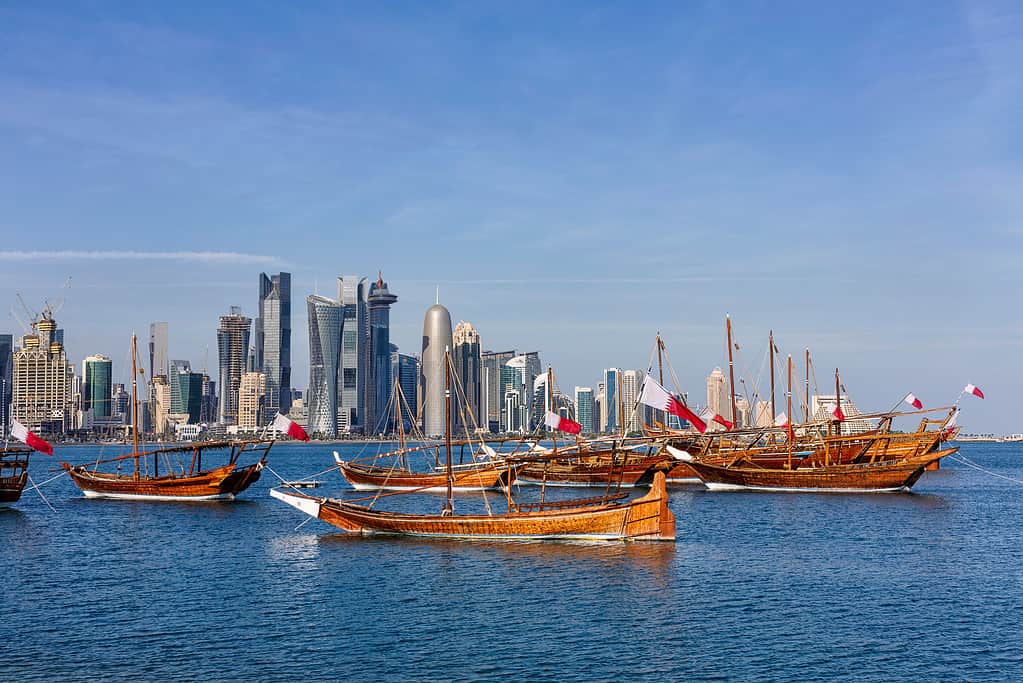
Doha is the main city and economic hub of Qatar.
©Davor Flam/Shutterstock.com
Let’s head nearly 4,000 miles to the opposite side of the continent. A small nation situated on the Arabian Peninsula, Qatar emerges as the second wealthiest nation in Asia. Qatar has a remarkably high GDP per capita of $83,890. This prosperity grants it a prestigious rank among the globe’s wealthiest countries, primarily sourced from its abundant oil and natural gas reserves.
Qatar’s economic structure is profoundly rooted in its exportation of natural gas. This sector contributes to over half of its national GDP. The nation possesses the third-highest confirmed deposits of natural gas in the world after Russia and Iran. This is even more impressive when considering how much larger these other two countries are than Qatar.
The 2021 data reveals that Qatar facilitates the export of an impressive 127.9 billion cubic meters of liquefied natural gas annually.
Beyond its pronounced presence in the oil and gas sectors, Qatar also functions as a notable financial nexus in its vicinity, fostered by liberal trade policies that spur growth in the private sector across diverse fields.
To diversify its economic platforms further than the existing oil and gas segments, Qatar established the Qatar Investment Authority (QIA) in 2005. This sovereign fund orchestrates the management of assets approximated at $475 billion, as per data from September 2023. Additionally, it holds substantial stakes in prime London real estate properties, including notable landmarks like The Shard and sections of Canary Wharf.
Looking forward, the economic trajectory of Qatar is projected to ascend by 4 percent in 2024. This represents a modest dip compared to the 4.75 percent enhancement seen in the year preceding. As recently as July 2023, the nation’s foreign exchange reserves were documented at a substantial 42.8 billion USD.
3. Israel – 55,540
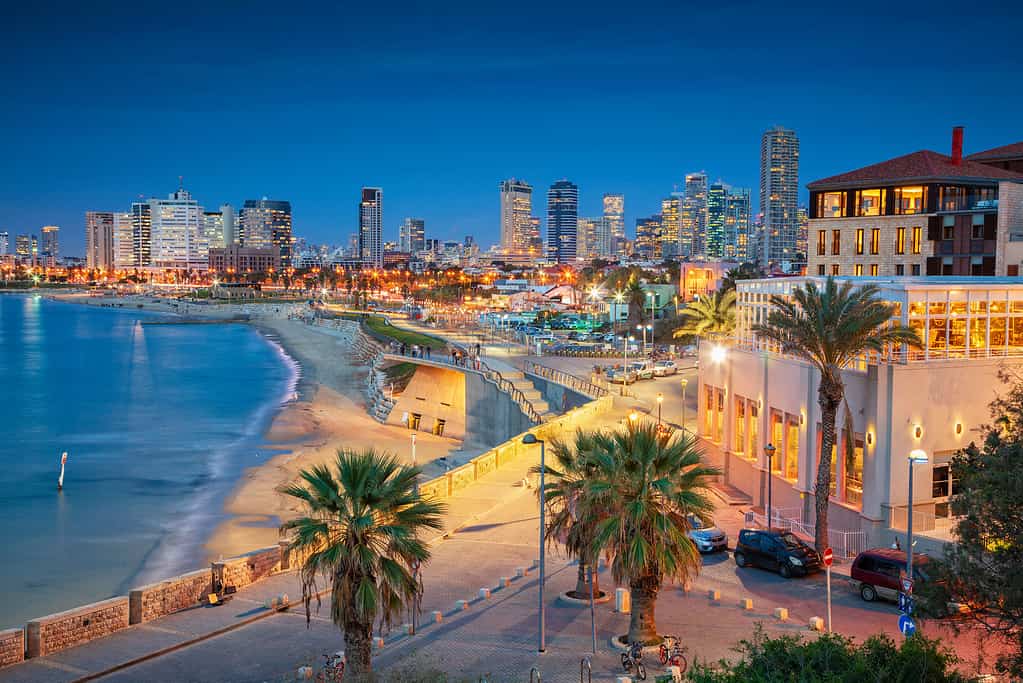
Israel has a fast-growing economy and is one of the richest countries in Asia.
©RudyBalasko/ via Getty Images
The third spot in the list of wealthiest Asian countries goes to Israel. Israel boasts a per capita GDP of $55,536, the 13th highest in the world. This nation’s economy is highly advanced and primarily concentrates on sectors such as software, telecommunications, and biotechnology.
Additionally, Israel holds a significant position in the international diamond industry. The nation is a hub for diamond processing, with a substantial amount of the world’s diamonds passing through the nation.
When we turn our sights to economic progression, Israel stands as the frontrunner in Western Asia and the Middle East. It showcased its economic prowess in 2022 by having the largest number of billionaires in the Middle East, securing the 18th spot on the global stage. A potent combination of a well-educated workforce and a superior university education system lays the foundation for Israel’s prosperous economy.
Currently, Israel is in 27th position among the powerhouse economies across the globe. In a 2022 analysis by The Economist, it was hailed as the fourth most flourishing economy among developed nations.
A rise has also been noticed in the country’s foreign reserves. In July 2023, Israeli reserves reached a notable 200.1 billion USD, up from 197.3 billion USD in the month before.
4. Hong Kong – $52,430

Officially a part of the People’s Republic of China, Hong Kong has a separate economy.
The Hong Kong Special Administrative Region is the fourth richest nation in Asia, presenting a GDP per capita of $52,430.
Despite its affiliation with China, Hong Kong preserves distinct political and economic systems, separated from those established in mainland China. Acknowledged universally as a prominent financial epicenter, Hong Kong boasts one of the most advanced technological infrastructures globally.
Additionally, Hong Kong’s economy thrives on a market-centric approach that prioritizes the service industry, characterized by a favorable tax environment and a strong commitment to free trade. The region serves as a vital gateway for commerce and tourism, linking the world to China. The airport of Hong Kong is also a global leader in handling international freight. Interestingly, while China functions on a socialist market economy that is a blend of capitalist and communist ideals, Hong Kong functions on a free-market economy.
At the end of July 2023, Hong Kong’s foreign currency reserves were recorded at a staggering US$421.6 billion. Hong Kong’s economy is forecasted to grow between 4% and 5% in 2024.
5. Macao – $50,570
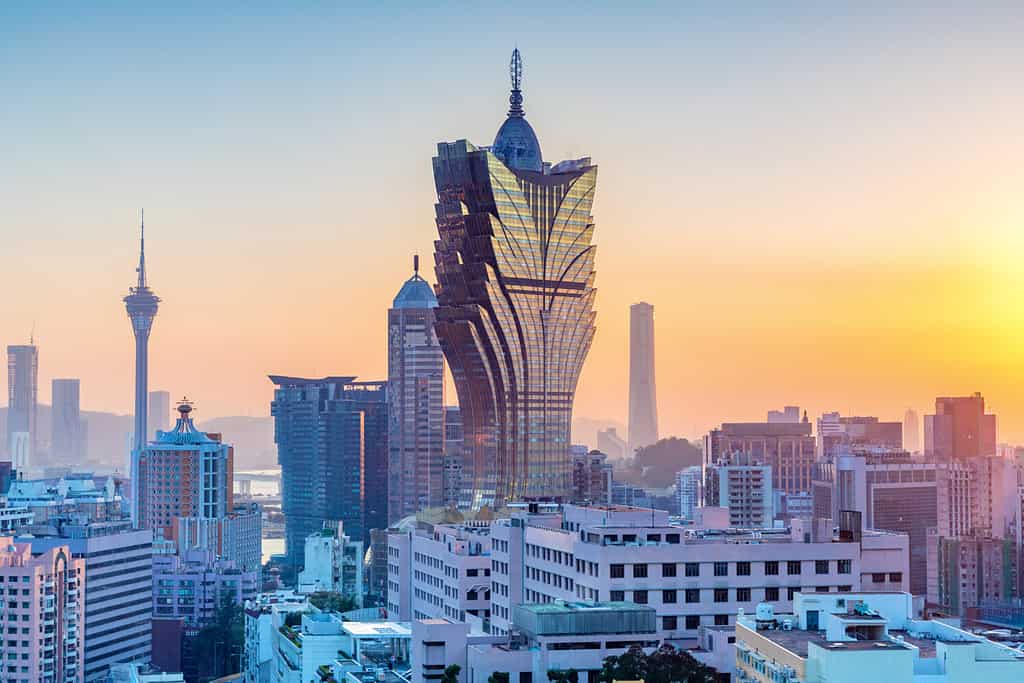
Many people refer to Macao as the gambling capital of China. The gambling industry is partially what makes the nation one of the richest countries in Asia.
©Sean Hsu/Shutterstock.com
Like Hong Kong, Macao is a part of the People’s Republic of China. Macau is not fully sovereign, functioning as a distinct administrative territory within China. That said, it has unique political and economic systems that are different from those of mainland China.
Frequently referred to as the “Gambling Capital of China,” Macau is recognized as the fifth richest country in Asia. Its charm as a destination for high-rolling bettors, especially those coming from China, has exponentially grown over recent years. This significant influx of tourists from the mainland has not only spurred the expansion of the gambling industry but also catalyzed a comprehensive economic advancement.
Despite housing a relatively small population, estimated at just around 650,000, Macau’s economic influence is substantial. The nation’s economic power is reflected in its high GDP per capita, the 5th highest in Asia. Over recent years, the gaming industry in Macau has surpassed that of Las Vegas in revenue production. Renowned corporations such as Las Vegas Sands Corporation and Wynn Resorts largely attribute their profit margins to their ventures in Macau.
In late 2023, economic projections indicated that the GDP of Macau could potentially reach a mark of 29.01 USD billion. In another positive sign, the region experienced a modest increase in its foreign exchange reserves, registering 27.1 USD billion in July 2023, a growth from 26.7 USD billion noted in the month prior.
6. United Arab Emirates – $49,450
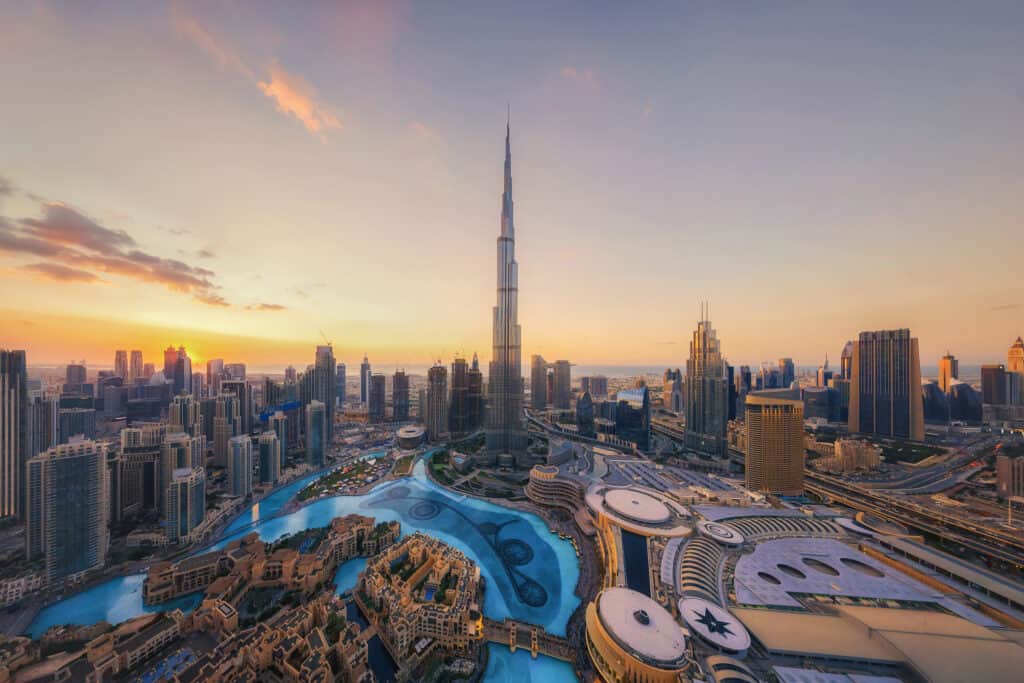
You can tell just by entering Dubai that it is one of the wealthiest countries in the world.
©Tavarius/Shutterstock.com
Positioned at the crossroads of Asia, Europe, and Africa, the United Arab Emirates enjoys a prime location. A combination of the nation’s location, oil reserves, and other trade has earned the UAE a spot on the list of richest nations in Asia.
Dubai, a buzzing city in the UAE, has established itself as a significant center for finance and tourism globally. The dazzling city houses wonders like the towering Burj Khalifa and the bustling Dubai International Airport.
The UAE also stands as a prominent player in the global oil and natural gas market, holding substantial reserves of both resources. A notable advantage for its residents is the absence of personal income tax. When assessing the overall prosperity, the UAE consistently ranks as one of the wealthiest regions in the world.
The country is vigorously expanding into industries beyond oil, such as finance, property development, and tourism. Massive investments in the UAE’s infrastructure aim to accommodate a rising tide of visitors. Dubai welcomed 8.55 million visitors between January and June 2023, helping the economy of UAE to increase rapidly.
As of June 2023, the foreign exchange reserves of the UAE were recorded at 156.7 billion USD, a slight increase from 156.0 billion USD in the month before. Following a robust growth of 7.9% in 2022, the UAE’s economy is projected to expand by 3.0% in 2024.
7. Japan – $35,390

One of the largest economies in the world and the richest countries in Asia is Japan.
©Sean Pavone/Shutterstock.com
Japan’s 20th-century history is complicated and fascinating. At the beginning of the 1900s, Japan quickly industrialized and became one of the most powerful countries in the world. But, after WWII and the defeat of the Japanese Empire, the nation was in shambles. In the mid-20th century, Japan quickly changed and rose to become one of the largest economies in the world. It currently has the 3rd largest GDP in the world and 28th highest GDP per capita.
During 2022, Japan showcased its robust economic position, ranking third globally based on its comprehensive GDP figures. As we transition into 2024, it is the seventh richest nation on the Asian continent, with the average income per person being $35,390.
Moreover, it occupies the fourth spot when considering purchasing power parity (PPP). It’s worth emphasizing that the Japanese yen takes the podium as the third most prevalent reserve currency globally. The US dollar and the euro are the only currencies that surpass the yen in this regard.
Currently, Japan is a formidable entity in the global trade sector, cementing itself at the fourth rank concerning imports and exports as per 2021 statistics. Its main export commodities encompass motor vehicles, semiconductors, and products of steel and iron, as well as components for automobiles.
In July 2023, Japan’s foreign exchange reserves increased to 1,130.3 billion USD from 1,126.1 billion USD the month before. The country’s economy is picking up speed, growing at a rate of 6.0% between April and June 2023, which shows that things are moving in a positive direction for 2024.
This substantial growth surpassed market forecasts of 3.1%, demonstrating a positive shift from the adjusted 3.7% expansion witnessed during the prior quarter.
8. Brunei Darussalam – $35,100

Closing off the list of the richest countries in Asia is Brunei.
©James Jiao/Shutterstock.com
Identifying Brunei Darussalam geographically can be difficult for many of us. This small country in Southeast Asia may not be the most well-known nation, but it is the eighth wealthiest nation in Asia.
The oil and gas sector largely supports the nation’s economy, which contributes to more than 90% of its GDP. As a prominent entity within the Organization of the Petroleum Exporting Countries (OPEC), it possesses substantial oil and gas resources. The governing body is dynamically allocating a significant portion of resources into building infrastructure, including the development of a modern airport and bolstering its main economic sectors.
Also, reports from the International Monetary Fund (IMF) indicate that a vast majority, surpassing 70%, of the nation’s income comes from exports in the hydrocarbon sector.
Recognizing the potential in the tourism sector, the country is actively seeking to increase its presence in this area. In 2003, the Sultan allocated a substantial budget of $2.7 billion for the construction of the plush Empire Brunei Hotel, highlighting the nation’s eagerness to promote tourism.
When it comes to foreign reserves, March 2023 saw a minor rise, totaling 3.3 billion USD, a slight upturn from the 3.1 billion USD noted in the preceding month. Economic projections for Brunei anticipate that the GDP could escalate to about 17.18 billion USD by the end of 2023, with predictions of a consistent upward trajectory, potentially reaching approximately 16.45 billion USD in 2024.
Some Other Richest Countries in Asia
- Taiwan – $33,910
- Kuwait – $33,650
- South Korea – $33,390
- Saudi Arabia – $29,920
- Bahrain – $28,390
Summary of the Richest Countries in Asia
| Rank | Country | GDP Per Capita (2023) |
|---|---|---|
| 1. | Singapore | $91,100 |
| 2. | Qatar | $83,890 |
| 3. | Israel | $55,540 |
| 4. | Hong Kong | $52,430 |
| 5. | Macao | $50.570 |
| 6. | United Arab Emirates | $49,450 |
| 7. | Japan | $35,390 |
| 8. | Brunei Darussalam | $35,100 |
Disclaimer: All figures of GDP per capita mentioned in this article have been obtained from the official website of the International Monetary Fund (IMF). The data represents the most recent statistics available up until April 2023. Please note that these figures are subject to change and updates.
The photo featured at the top of this post is © leungchopan/ via Getty Images
Thank you for reading! Have some feedback for us? Contact the AZ Animals editorial team.







